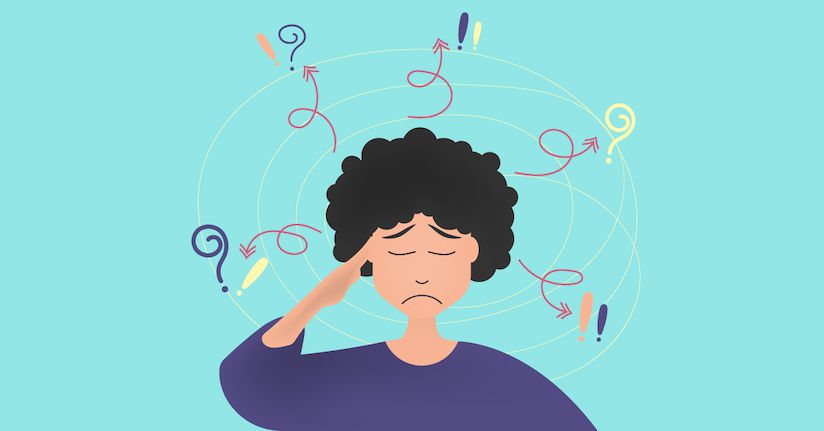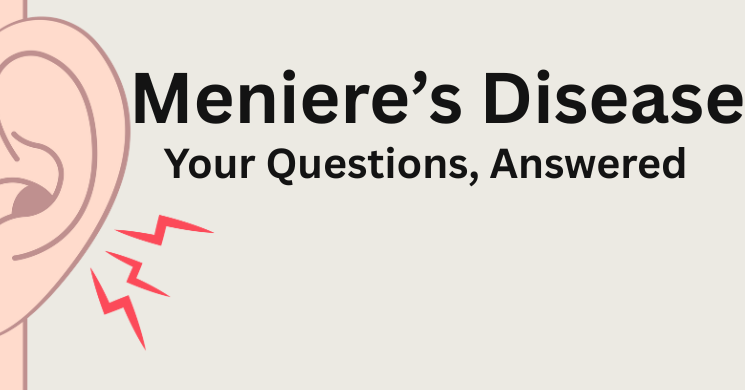Conquer vestibular migraine: a beginners guide
Here is a beginners guide to vestibular migraine. We’ll cover the difference between migraine, vestibular migraine, management tips and tricks, and when to start vestibular rehabilitation (VRT).
What is migraine? How is vestibular migraine different?
In general, migraine is a neurological disorder and has various symptoms that can be present. Here is a list of some common symptoms associated with migraine:
- head pain (typically experienced on one side, near the eye/temple region, but not always)
- vertigo, imbalance, and dizziness
- light sensitivy
- sound sensitivity
- smell sensitivity
- nausea/vomitting
- neck pain
- ear ringing/tinnitus
- visual changes
- tingling
- and more
Migraines act differently with each person. A common misconception is that a migraine is only a bad headache, or if you know someone with migraines and their symptoms are different than what you experience you think “oh well I don’t have migraines because they’re nothing like my friends”. If it’s impacting your life, it’s worth talking to a medical provider about!
Vestibular migraine
Vestibular migraine accounts for 3% of all migraines. This subtype of migraine has specific symptoms relating to the vestibular system (vertigo, imbalance, dizziness, brain fog, feeling “off”, lightheadedness etc).
The International Classification of Headache Disorders criteria for vestibular migraine are:
- At least 5 episodes of vestibular symptoms of moderate or severe intensity lasting 5 minutes to 72 hours
- Current or previous history of migraines with or without aura according to the ICHD classification
- One or more of the following migraine features with at least 50% of vestibular episodes:
-
- Headache with at least 2 of the following characteristics
- One-sided location, pulsating quality, moderate or severe pain intensity; photophobia or phonophobia
- Visual aura
- Not better accounted for by another vestibular or ICHD diagnosis
click here for the research article that outlines this criteria.
The big thing to remember here is that not all vestibular migraines have head pain/headaches. Headache can be present, as well as the other symptoms on the list above in addition to vestibular symptoms.
Phases of migraine
- There are 5 phases to migraine. Again, everyone can experience these phases differently, but are important to know to better identify how your body responds to a migraine event so you can act quickly when you begin to see signs of a migraine for best results.
The 5 phases are:
- Prodrome
- Symptoms that occur in the beginning of an attack. Can last hours to days
- Aura
- neurological symptoms that occur right before an attack. Can last 5min-60min
- Attack
- The most severe symptoms, lasting hours to days.
- Postdrome
- The end of an attack, gives you a “hangover” feeling. Can last hours to days
- Interictal
- Symptoms that are experienced between attacks (quick spins, fatigue, light and sound sensitivity are a few). This is due to the underlying migraine condition and where vestibular rehabilitation therapy (VRT) can be helpful. But it’s also very important to get the migraine under control before heading into VRT, more on this later!
When to start Vestibular Rehabiliation (VRT)
VRT is beneficial in addressing residual symptoms after migraine attacks, or the interictal symptoms experienced in day to day life. VRT is most effective when attacks are mostly under control. If you’re having multiple attacks in a month, or you’re having a hard time getting symptoms under control, VRT may not be appropriate at that time. A couple of sessions may be helpful for education to try various methods to get symptoms under control, or addressing neck pain through gentle stretching, manual work, postural and ergonomic education).
VRT is most beneficial when your migraine is under control. Using habituation principles to improve interictal symptoms is best done when your vestibular migraine is under control. If your migraine and symptoms aren’t well managed, trying to do VRT is like throwing gasoline on an already raging fire and hoping it burns out. This is why VRT can make you feel worse. It’s important to have a therapist familiar with vestibular disorders and vestibular migraine to guide and dose your VRT appropriately.
What should I do when I have a vestibular migraine attack
If you begin to feel an attack coming on, you want to initiate your plan as soon as possible to try to stop th eattack or minimze the severity or time of symptoms. This may look like:
- Acute meds prescribed by your neurologist
- magnesium
- ginger
- grounding and breath work
- gentle walking
- water
- electrolytes
- Cefaly or GammaCore
- essential oils
- icepack/headache hat
Vestibular migraine management
- Start with the basics:
- eating meals regularly
- consistent sleep
- hydration
- Gentle, daily movement
- Mindfulness and mindset work. Stress can be a big migraine trigger!
- Consider blue light glasses, ice packs/headache pack, educational books (found more in depth here)
- Research backed vitamins and supplements for migraine (full list here). Vestibular Group Fit members get 30% off their fullscript orders!
- Talk to a neuroglist to see if you fit a vestibular migraine diagnosis. Discuss a plan for you regarding preventative, acute and rescue medications.
- Track large symptom days to find patterns. (migraine buddy is a helpful app for this)
- Diet and hormones can also be involved. More on diet here and here and here; more on hormones here and here.
There’s a lot of great content on tis website for vesitbular migraine, I tried to include most of it here but might have missed some. Vestibular Group Fit is a great place to find all this information presented to you in one spot with excellent resources, with a community of others to provide their own experience, advice and guidance for symptom management, lifestyle changes, and support with movement.
Disclaimer
Want to learn more about vestibular migraine management and be a part of a supportive community to get back to your daily life? Find out more at this link: https://tvd.flywheelstaging.com/about-group/
Disclaimer:
Remember: this post is for informational purposes only and may not be the best fit for you and your personal situation. It shall not be construed as medical advice. The information and education provided here is not intended or implied to supplement or replace professional medical treatment, advice, and/or diagnosis. Always check with your own physician or medical professional before trying or implementing any information read here.






